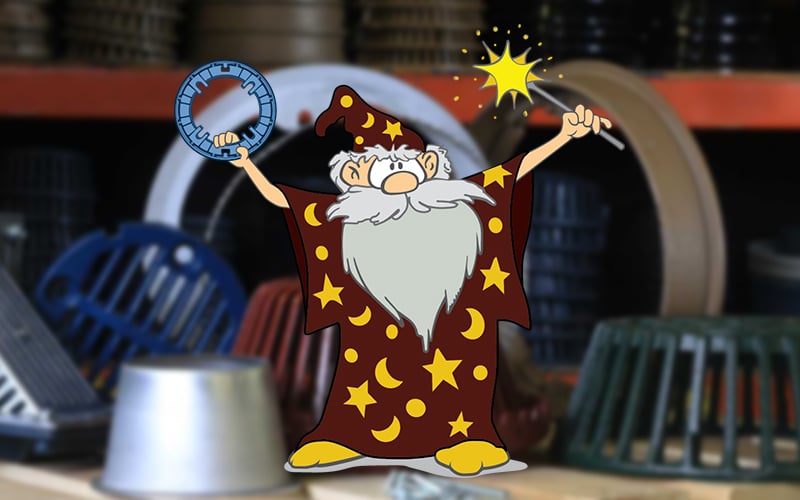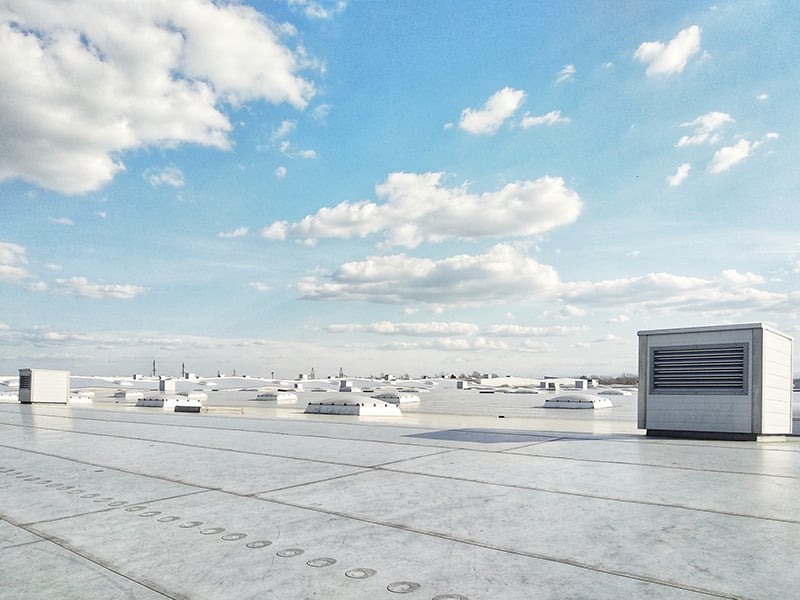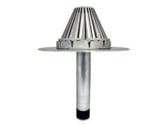Even though they just sit there, roof drains take a surprising amount of abuse. They are completely exposed to extreme heat in the summer and cold in the winter. In addition, they are low enough to the ground to go unnoticed to distracted crews working on the roof deck, or to get buried in snow piles.

For these reasons, the type of roof drain dome you buy needs to be able to stand up to the demands of the job. There are two primary types of roof drain dome materials:
- Cast Iron: A hard, alloy made of steel and carbon that is cast in a mode to give it a defined shape.
- Plastic: A lightweight polymer that is cheap to produce, easily molded and completely water resistant.
If you’re in the market for a new roof drain or dome, and trying to decide whether you should buy a cast iron or plastic dome, consider the following:
Extreme Temperatures
Cast iron is much stronger than plastic, and is not nearly as effected by extreme temperature. In the summer, plastic domes can melt and come off the drain bowl. In the winter, the plastic can freeze and become brittle. All it takes is a misdirected snow shovel to break it clean off the drain.
It's Windy on a Roof Deck
If a plastic drain dome comes loose of its fasteners as described above, all it takes is a gust of wind to blow it across the roof or off the building, creating a hazardous projectile.
On the other hand, cast-iron domes are heavy, and if they should somehow come loose of the drain, it would take a serious storm to send them flying.
Cast Iron Isn't That Expensive
You’d assume that because of the material, cast iron domes are prohibitively more expensive than plastic, but that’s not actually the case. For example, the Zurn Large Ploy Dome costs $58.50 and the cast iron version costs just $16.50 more ($75).
As The Plumbing Info points out in their post, When It Rains It Pours – Roof Drains Explained, they’ve used cast iron domes for 20 years, and haven’t lost a job because the domes cost too much.
Relative Expansion
Plastic and cast iron have different expansion coefficients, meaning they expand and contract at differently at different temperatures. This means that as a plastic dome expands or contracts more severely than the bowl, the fasteners will be put under a great deal of stress, weakening and stretching them.
This can lead to the drain breaking, coming free of the bowl, or loosen enough to let unwanted debris into the drain.
At the end of the day, while the cost of cast iron domes may be slightly higher, you’ll likely save more over the lifetime of the drain in terms of maintenance and replacements dome when compared to plastic.





